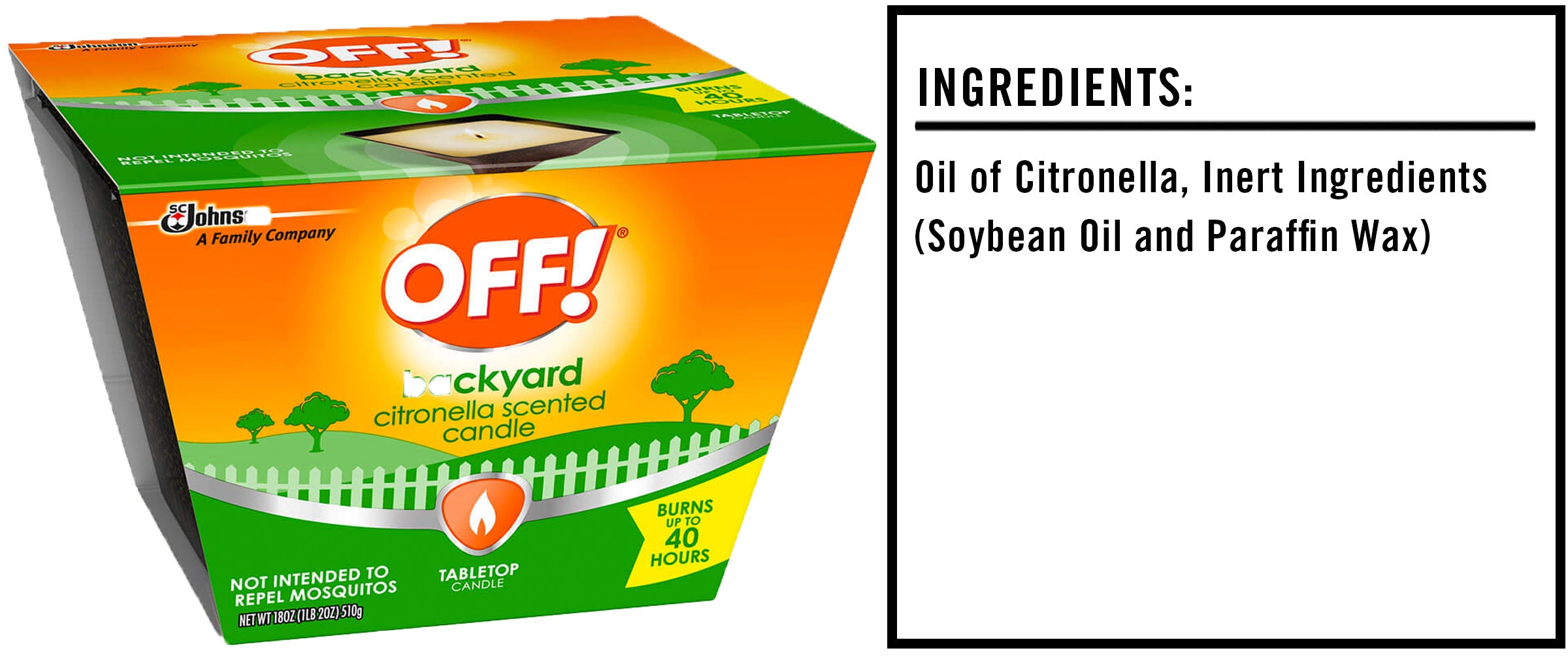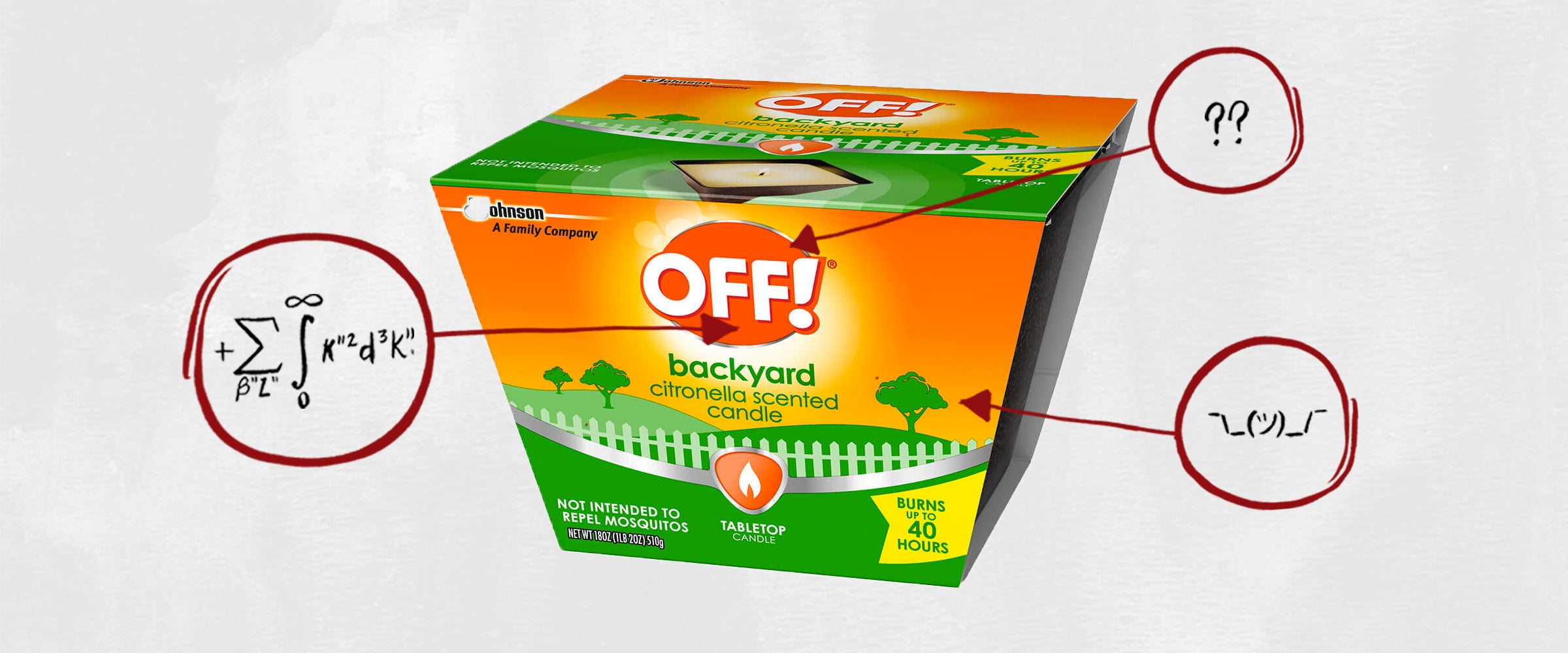We’re often told that you should never eat anything (or put anything on your body) if you don’t recognize everything on the ingredients list. But since most of us have no idea what xanthan gum or potassium benzoate are — or more importantly, what they’re doing to our bodies — we’re decoding the ingredients in the many things Americans put in (and on, or near) themselves.
This edition: OFF! Citronella Candles, which are made from two separate ingredients (well, kinda) that we’ve broken down in the exact order they appear online.

The Ingredients
1) Oil of Citronella: Citronella oil is derived from an assortment of plants within the Cymbopogon family, and it has some alleged insect-repellent properties. Per the National Pesticide Information Center, “It works by masking scents that are attractive to insects. Thus, insects find it difficult to locate their target to feed.”
Does that really mean lighting a citronella candle will create an insect-repellent force field around your back porch? Fuck no! For one, when it comes to proving these bug-repellent characteristics, the National Pesticide Information Center admits, “No studies could be located.”
Likewise, the amount often found in these candles is usually inconsequential. “Citronella oil is repellent to mosquitoes to a degree, but the amount being put out by a candle isn’t going to be very effective,” Eric Hoffer, president of Hoffer Pest, told the Today show. “In most cases, a citronella candle is only going to contain a five percent concentration of citronella or less.” This specific OFF! candle contains only 0.5 percent.
2) Inert Ingredients (Soybean Oil and Paraffin Wax): These are common ingredients used in candle-making, and they make up the basis of these candles. In fact, if you want to learn a little more about candle-making, one study explains soybean oil might be a better alternative to paraffin wax: “A considerable amount of soot was produced from the combustion of paraffin candles, but little or none was observed from soywax candles. Compared to paraffin candles, soywax candles burned at a significantly slower rate and required less air.”
Good stuff, soy!
The Takeaway
So yeah, the idea that citronella candles effectively repel insects is bullshit. Admittedly, though, OFF! has “NOT INTENDED TO REPEL MOSQUITOS” printed right on the front of their citronella candle packing.
Still, numerous reviewers on their website claim they feel tricked by this product, since the whole notion behind citronella candles is keeping bugs away. “I bought this product when I was in a hurry at the grocer,” one reviewer writes [sic throughout]. “I admittedly didn’t read the packaging. It was being sold on a shelf filled with nothing else but different brands of bug repellents and bug traps. I made the mistake of not keeping my receipt. My fault I guess for assumptions. Being that it’s made by a repellent brand and sold with repellent, I assumed it was meant to repel. I got home, lit it and then noticed the tiny writing on the packaging ‘NOT INTENDED TO REPEL MOSQUITOS.’ Ahem, I don’t need outdoor ‘ambience.’ If I did, I’d buy an L.E.D. candle.”
I hear you.
This isn’t only an OFF! Issue, either. Here’s another citronella candle that very pointedly claims, “Repels Mosquitoes & Other Flying Insects.” But it only contains three percent citronella oil, and as the bug expert above said, five percent or less does virtually nothing.
All of which is to say, skip the citronella candles and go straight for the real deal bug repellent instead.

